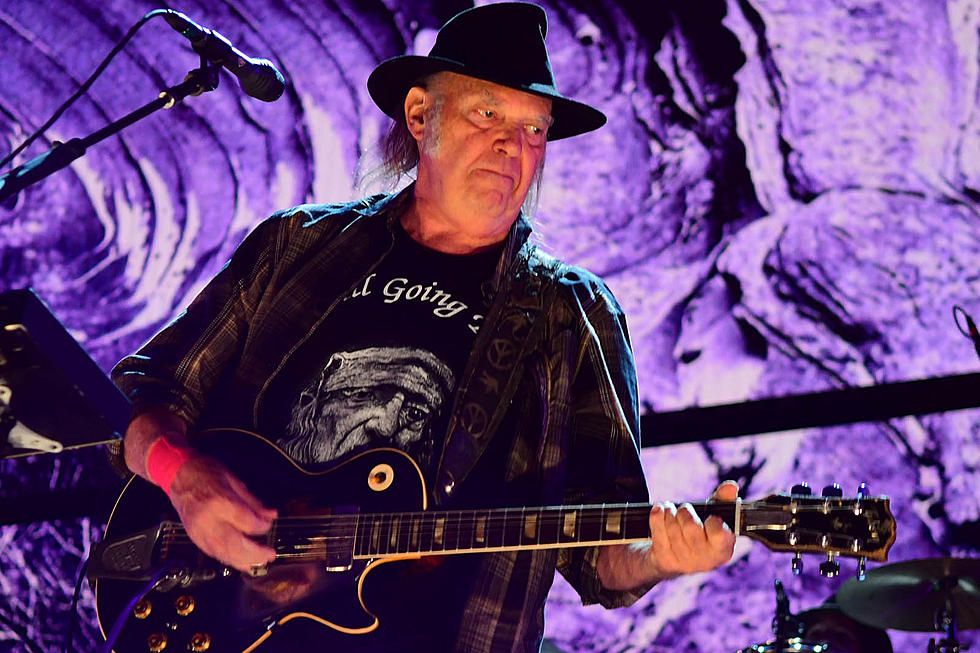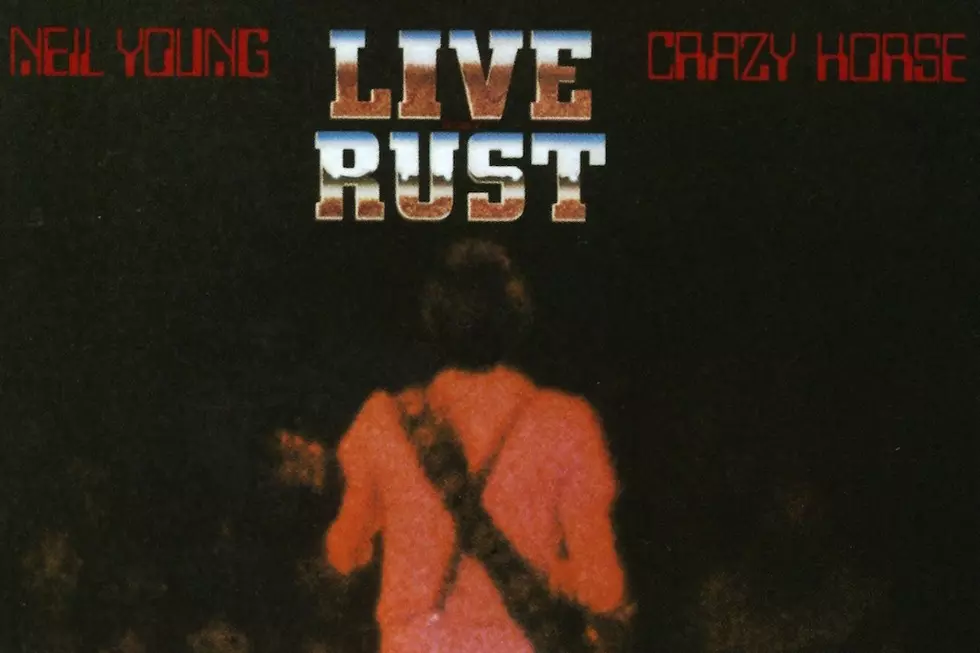35 Years Ago: Neil Young Releases ‘Rust Never Sleeps’
Hey hey, my my, has it already been this long? On July 2, 1979, Neil Young and Crazy Horse released a record that would come to define the sound of rock music for a generation, the universally beloved ‘Rust Never Sleeps.’
In 1978, Young hit the road, ostensibly to promote his then-just released record, ‘Comes a Time.’ But when the time indeed came to perform in front of an audience, he couldn’t be more bored with what he’d already put in the can. “It was made to come out a year ago and got hung up with pressing problems,” he explained to Cameron Crowe in Feb. 1979. “I hear it on the radio and it sounds nice...But I’m somewhere else now. I’m into rock & roll.”
In an interview excerpt from the book ‘Shakey’ by Jimmy McDonough, the singer recalled the inspiration that caused him to rethink what he was doing. “It all started when I looked at the pile of amplifiers that I had when I was rehearsing,” he said. “It was just such a gross pile of junk…there was no concept, it just all fell together…that’s why it was so easy. And when something’s real easy, I think that’s when it’s the best.”
Young also felt intrigued by a new concept accidently presented to him by the Akron, Ohio based New Wave outfit Devo. He had enlisted the band to help him work on what would become the comedy film ‘Human Highway’ and while reviewing some of the recorded material for the project, he was struck by a phrase that the band had been chanting, "Rust never sleeps.” Young called them up to find out its meaning and, as it turned out, a couple of members of the band had devised the chant as an advertising slogan for the product Rust-Oleum.
The phrase struck a chord with Young. Throughout his career, he had already exhibited a propensity to move to the beat of his own drummer, and something about the creeping imagery of rust in his mind pushed him to act upon some of his wilder impulses. The result ultimately became a no-holds-barred arena tour that has gone down as one of the most discussed and remembered in the history of rock and roll.
As a prelude to each show along the way, massive prop amplifiers and microphones would be assembled by a gaggle of hooded crew members dubbed "road-eyes." Once everything was in place, Young would then descend from atop the stack of amplifiers with an acoustic guitar for a solo opening set. Later he would be joined by his backing band Crazy Horse to play jarringly loud selections from his back catalog with announcements of from the Woodstock festival mixed in between the breaks.
Intermittently throughout the ‘Rust Never Sleeps' tour, Young got the recording equipment up and running and much of what would make up the subsequent record – especially the album’s second side – were culled from these performances. In addition, songs from a solo stint at the Boarding House in San Francisco were also added to round things out.
While the base material on the record is taken from concerts, ‘Rust Never Sleeps’ is not really a live record (a proper document, 'Live Rust,' and its film would arrive in late 1979). Much of the crowd noise, with the exception of the opening and closing, acoustic/electric takes on the song, ‘Hey Hey, My My’ has been edited out. There was also a high degree of overdubbing and studio polishing, as well as the addition of two songs that were first put to tape much earlier; the 1975 cut ‘Pocohantas’ and ‘Sail Away’ from the ‘Comes a Time’ sessions.
‘Rust Never Sleeps’ went on to become one of the most celebrated and important records in rock and roll. The sludgy, overdriven wall of crushing guitar noise that permeates the album's iconic second side has inspired a multitude of artists who have followed in Young's wake to crank things up past 11. In the decades to follow, it even helped earn him the title of "Godfather of Grunge."
As always, the singer himself didn’t leave himself much time to reflect on his own work. The next year he would put out the long-gestating ‘Hawks and Doves,’ followed soon after by the much-maligned electronic record, ‘Trans,’ the year after that. Indeed, for Young, as he recounted in the biography ‘Shakey,’ the enduring legacy of the ‘Rust Never Sleeps' album and tour was simply that, “After 'Rust,' no one ever asked me why I played with Crazy Horse.”
More From Ultimate Classic Rock









